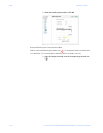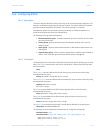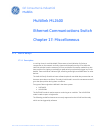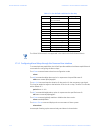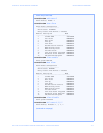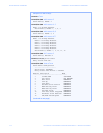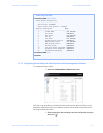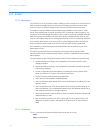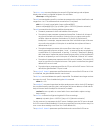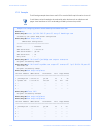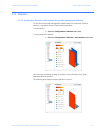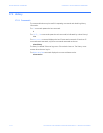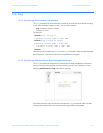
17–6 MULTILINK ML2400 ETHERNET COMMUNICATIONS SWITCH – INSTRUCTION MANUAL
MISCELLANEOUS COMMANDS CHAPTER 17: MISCELLANEOUS COMMANDS
17.2 E-mail
17.2.1 Description
SMTP (RFC 821) is a TCP/IP protocol used in sending e-mail. However, since it's limited in its
ability to queue messages at the receiving end, it's usually used with one of two other
protocols, POP3 or Internet Message Access Protocol (IMAP) that lets the user save
messages in a server mailbox and download them as needed from the server. In other
words, users typically use a program that uses SMTP for sending e-mails (out going - e.g.
replying to an e-mail message) and either POP3 or IMAP for receiving messages that have
been arrived from the outside world. While SMTP (and its related protocols such as POP3,
IMAP etc.) are useful transports for sending and receiving e-mails, it is extremely beneficial
for a network administrator to receive e-mails in case of faults and alerts. The MultiLink
family of switches can be setup to send and e-mail alert when a trap is generated.
If this capability is used, please ensure that SPAM filters and other filters are not set to
delete these e-mails.
GE Multilin recommends that a rule be setup on the mail server so that all e-mails
indicating SNMP faults are automatically stored in a folder or redirected to the necessary
administrators.
The SNMP alerts can be configured using the MultiLink Switch Software for the following:
• Send e-mail alert according to the configuration rules when a specific event
category happens.
• Send e-mail alert according to the configuration rules when a specific trap SNMP
trap category happens.
• Provide configuration and customization commands for users to specify SMTP
server to connect to, TCP ports, user recipients and filters.
• The SMTP alerts provide the following capabilities:
• SMTP alerts can be enabled or disabled globally.
• User can defined a global default SMTP server identified by its IP address, TCP port
and retry count.
• User can add up to five SMTP alert recipients. Each recipient is identified by an ID
and e-mail address. The e-mail address needs to be a valid address and can be an
alias setup for distribution to a larger audience.
• Filters are provided for each recipient to allow only certain categories of traps and
events be sent by e-mail.
• Each recipient can have its own SMTP server and TCP port number, if this is not
defined on a certain recipient, the default SMTP server and TCP port number is
used.
17.2.2 Commands
The smtp command configures the SNMP alerts to be sent via e-mail.
smtp
smtp <enable|disable>



